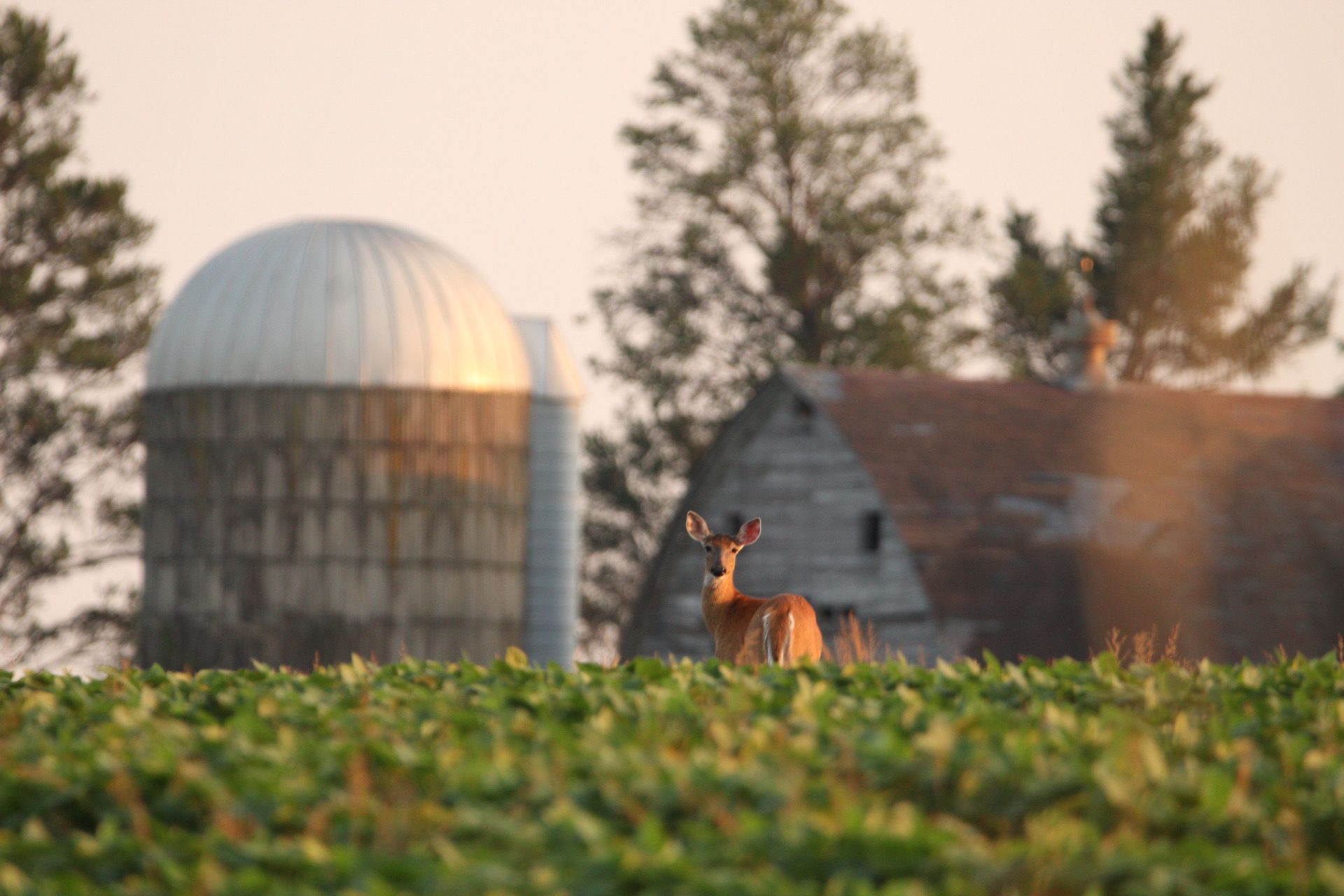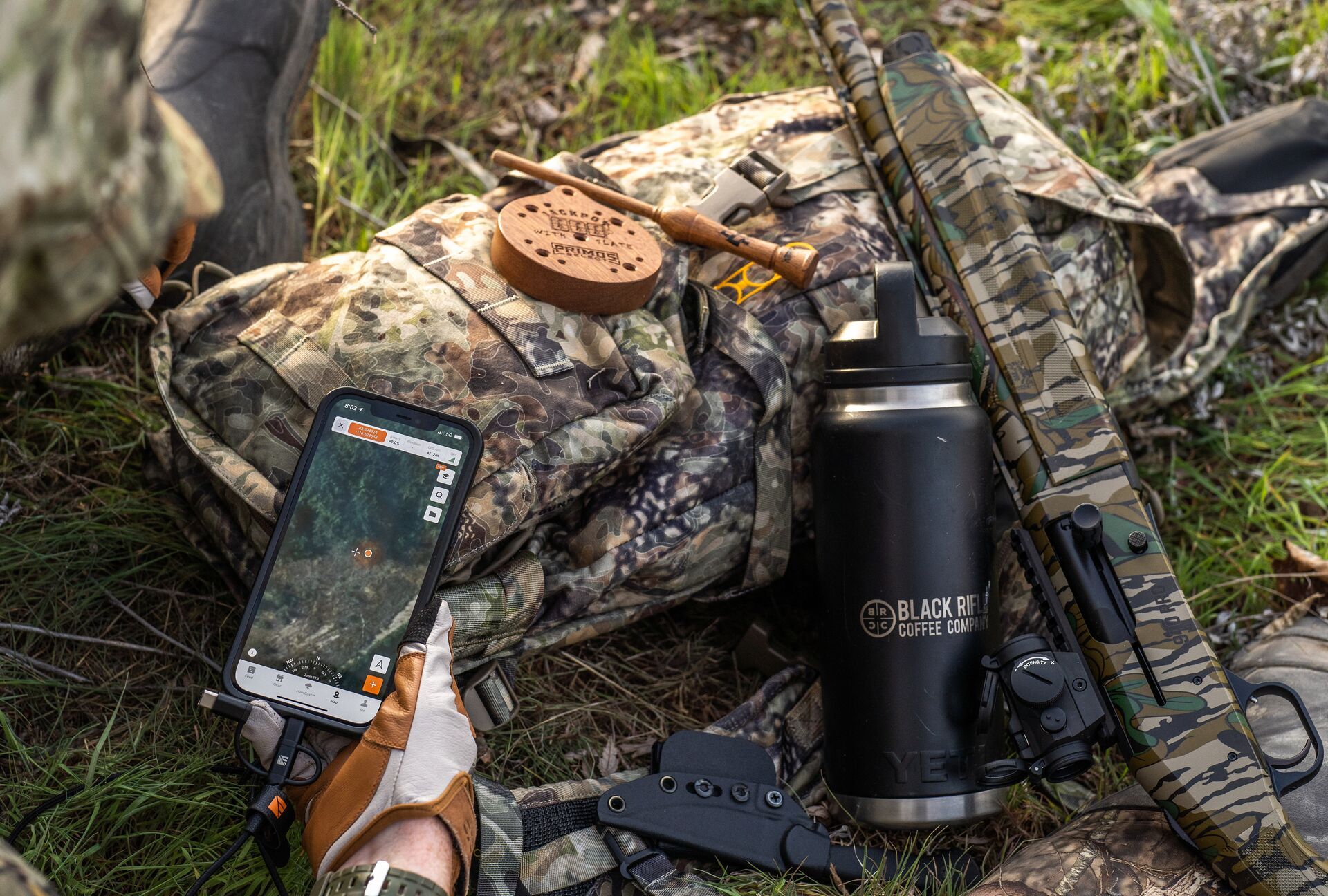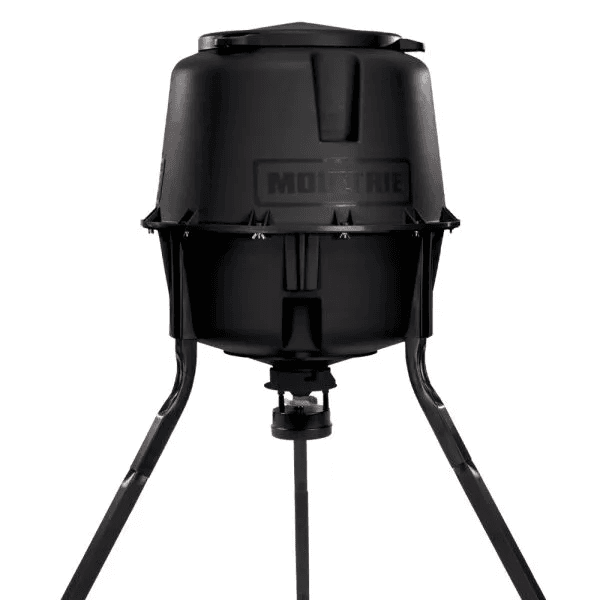For hunters and animal enthusiasts hoping to get a glimpse of these stunning and fascinating creatures, deer feeders can be an effective strategy. While they're regulated and not legal in every state, if you're lucky enough to be able to use one, go for it.
This blog looks at the top deer feeders for 2024 and offers tips on how to set up your feeder and get the most out of it. You'll also hear from one of our experienced HuntWise Field Team hunters, Cody Barhorst, about his approach to using deer feeders.
Updated June 3, 2025

How Hunters Use Deer Feeders
Deer feeders are an attraction strategy for luring deer to a particular area by providing access to supplemental food. They play a crucial role in supporting the health and well-being of local deer populations.
These timed, motion, or gravity-activated devices, typically mounted on a platform, release a set amount of food. By providing year-round nutrition, they contribute to the deer's health, longevity, and antler size.
This is particularly important in winter when bioavailability and food sources are scarce. Wildlife enthusiasts and hunters can actively participate in caring for and supporting these beautiful creatures using deer feeders.
For hunters, feeders can concentrate deer populations, making them easier to hunt and building habits by attracting them to your property.
Deer Feeder Tips and Choosing the Right One
A full range of deer feeders is on the market, from high-end tech-supported feeders to simple gravity feeders. When settling on a feeder, consider your needs, the deer population, the time of year, and your budget.
When placing your deer feed, as water is an essential resource for deer, consider locating it near water such as a stream or pond. Additionally, zones with coverage where deer can feel confident to feed with minimal threat, such as dense brushes, are always a good option.
Finally, choose areas near natural food sources such as leaves, shoots, and grasses, as deer are indiscriminate eaters and will forage around the feeder.
What Else Should You Consider?
Some additional considerations include:
- Durability requirements: How harsh is your natural environment? Will you need something highly waterproof and weatherproof?
- Light: Consider the amount of sunlight your location receives. Many feeders require sunlight to keep the feed dry and fresh and prevent bacterial build-up.
- Capacity: Feeder capacity can range from 50 pounds to 300 pounds, so choose the right amount for the local population. If you're unsure of the quantity, you can always ask the local wildlife authority for advice.
As you can see, using a deer feeder requires plenty of thought and planning to make sure it's the right food source for deer in your area.

Types of Deer Feeders
Understanding the primary types of feeders makes choosing the right feeder easier. They each function differently, so here's a quick rundown of the most popular feeder types.
Gravity Deer Feeders (or "Free Choice" Feeders)
These simple self-loaded feeders use – you guessed it – gravity to replenish the food they eat, commonly corn or pellets.
They're super user-friendly and portable, making them a great introduction to deer feeders for a first-timer.
Electronic/Time-based Feeders
A timer controls the dispensing of feed from this feeder. Users can set their preferred number and length of dispensing time.
Time feeders run on batteries or via solar panels. As with gravity feeders, they come in various sizes, and you'll need to check battery life occasionally.
Tripod Feeders
Tripod deer feeders are considered sturdy and reliable devices. They are typically made of metal or plastic and have three legs that support the feeder.
Hanging Feeders
Hung from tree branches or man-made structures, these feeders are constructed with containers to hold the deer feed and constantly release feed at intervals.
Trough Feeders
This simple option, which looks like a little shed, can be manually loaded. A group of deer can gather around it to feed, making it great for viewing deer in groups.
Manger Feeders
A manger feeder functions like a rack loaded with feed. It's easy access for the animals, so expect groups of deer to stop by for a snack at once.



 Gear
Gear Gear
Gear Gear
Gear







